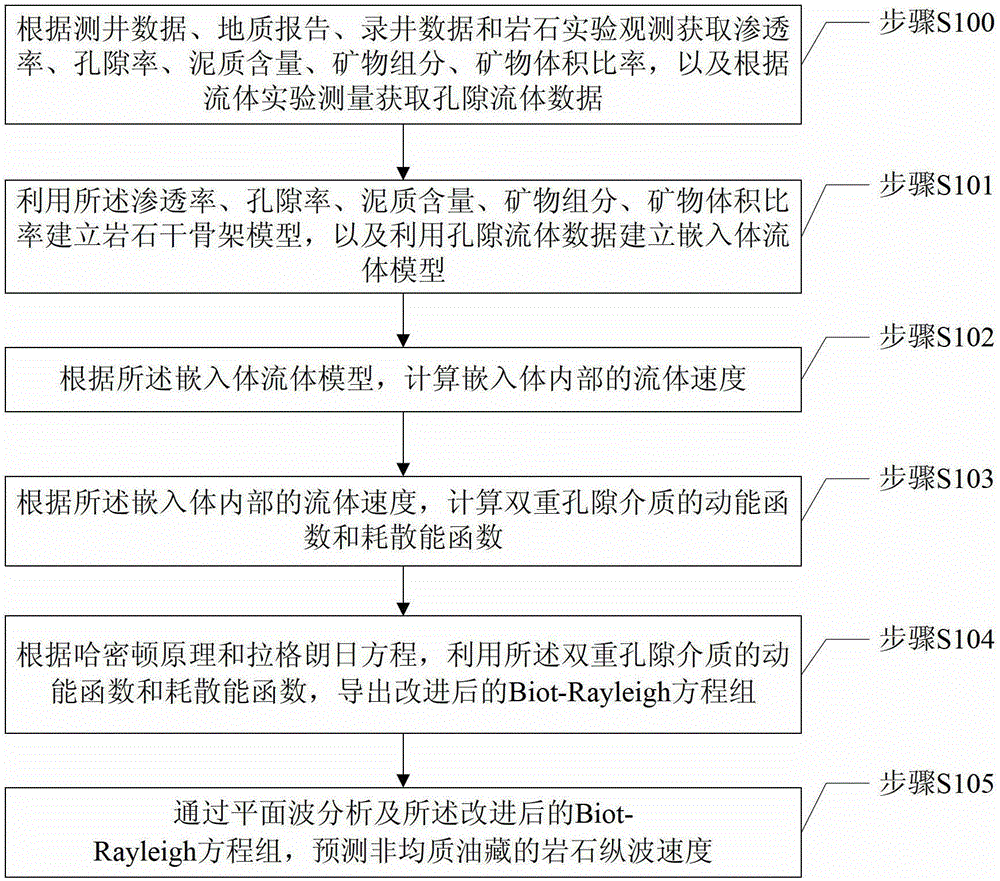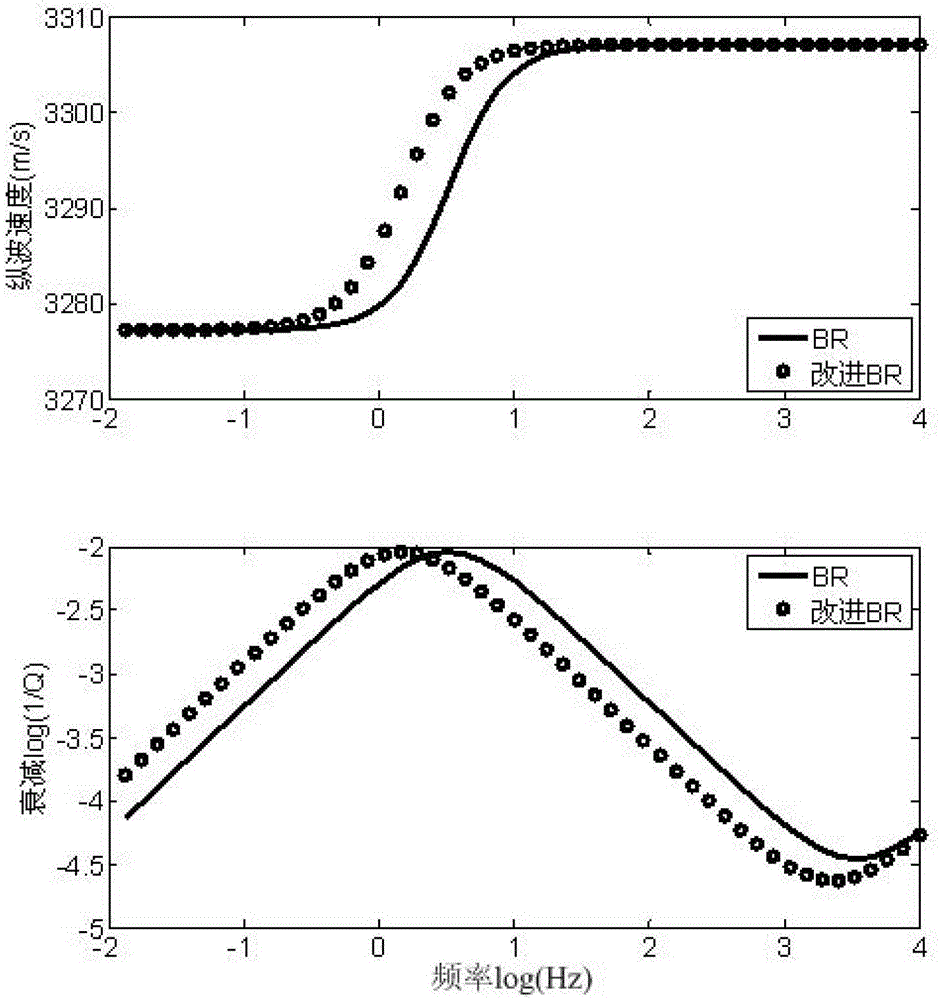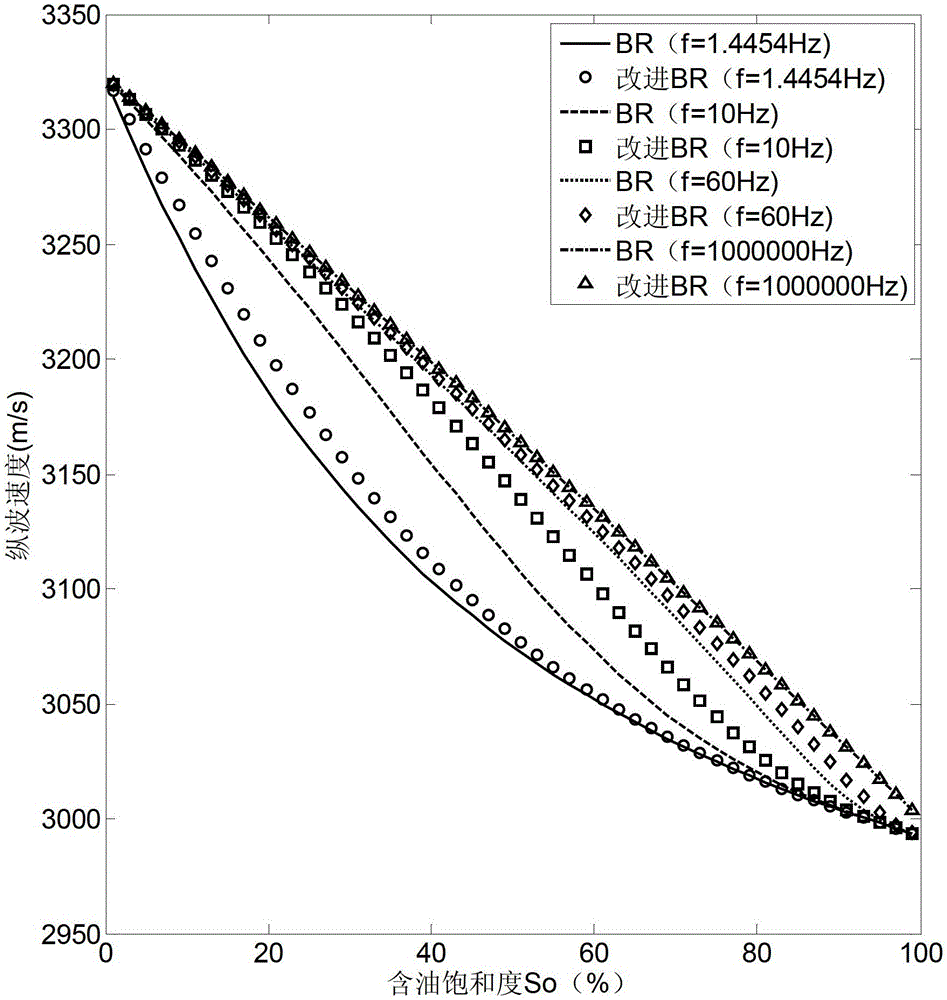A P-wave Velocity Prediction Method for Rock Systems in Heterogeneous Reservoirs
A technology for heterogeneous oil reservoirs and longitudinal wave velocity, which is applied in the seismology and seismic signal processing for logging records, and can solve the problem that the seismic detection engineering of heterogeneous oil reservoirs cannot be applied, the physical process cannot be completed, and the Non-uniform and complex formation engineering application and other issues
- Summary
- Abstract
- Description
- Claims
- Application Information
AI Technical Summary
Problems solved by technology
Method used
Image
Examples
Embodiment 1
[0030] This embodiment provides a method for predicting the compressional wave velocity of rocks in heterogeneous reservoirs, such as figure 1 As shown, the method includes:
[0031] Step S100, obtaining permeability, porosity, shale content, mineral composition, mineral volume ratio according to well logging data, geological report, mud logging data and rock experiment observation, and obtaining pore fluid data according to fluid experiment measurement;
[0032] The purpose of this step is to obtain accurate and reliable rock physical parameters and fluid parameters, so as to provide a reliable data basis for predicting the rock compressional wave velocity of heterogeneous reservoirs.
[0033] Step S101, using the permeability, porosity, shale content, mineral composition, and mineral volume ratio to establish a rock dry skeleton model, and using pore fluid data to establish an embedded body fluid model;
[0034]In this step, the establishment of the rock skeleton model is m...
Embodiment 2
[0098] This example quantitatively predicts the velocity and attenuation of longitudinal waves in the full-band "water-in-oil" double-porous medium:
[0099] In this embodiment, an oil-water unsaturated rock physics model is designed. The basic rock physics parameters are: the bulk modulus of the matrix is 35Gpa, the bulk modulus of the skeleton is 7Gpa, the shear modulus of the skeleton is 9Gpa, and the average density of the matrix is 2650Kg / m 3 , the bulk modulus of oil is 0.6Gpa, and its density is 900Kg / m 3 , the bulk modulus of water is 2.25Gpa, and its density is 990Kg / m 3 , with a porosity of 0.15 and a permeability of 0.1×10 -12 m 2 , the viscosity of water is 0.001Pa·s, the viscosity of oil is 0.006Pa·s, the average bubble size is 0.25m, figure 2 and image 3 They are schematic diagrams of the theoretically predicted changes in P-wave velocity and attenuation before and after improvement when the frequency is 0.01-10000 Hz and the saturation is 0-100%.
Embodiment 3
[0101] In this example, the experimental data of oil-water saturated rock samples in the Sugaitebulak area of Aksu City are compared with the theoretical prediction data:
[0102] The main component of the sample is dolomite, the degree of cementation is very high, the permeability is 0.174md, the porosity is 0.0547, the average embedded body size is set to 0.035mm, and its main physical parameters are:
[0103] (i) The bulk modulus of the rock skeleton is 76.2Gpa, and the shear modulus is 30.67Gpa;
[0104] (ii) The bulk modulus of rock particles is 94.9Gpa, the shear modulus is 45Gpa, and the density is 2870Kg / m 3 ;
[0105] (iii) The fluids used in the experiment are oil and water, the bulk modulus of water is 2.25Gpa, the bulk modulus of oil is 0.6Gpa, the viscosity of water is 0.001Pa·s, the viscosity of oil is 0.006Pa·s, and the density of water is 990Kg / m 3 , the density of oil is 900Kg / m 3 ;
[0106] (iv) The frequency used in the experiment is 800KHz, Figure...
PUM
 Login to View More
Login to View More Abstract
Description
Claims
Application Information
 Login to View More
Login to View More - R&D
- Intellectual Property
- Life Sciences
- Materials
- Tech Scout
- Unparalleled Data Quality
- Higher Quality Content
- 60% Fewer Hallucinations
Browse by: Latest US Patents, China's latest patents, Technical Efficacy Thesaurus, Application Domain, Technology Topic, Popular Technical Reports.
© 2025 PatSnap. All rights reserved.Legal|Privacy policy|Modern Slavery Act Transparency Statement|Sitemap|About US| Contact US: help@patsnap.com



